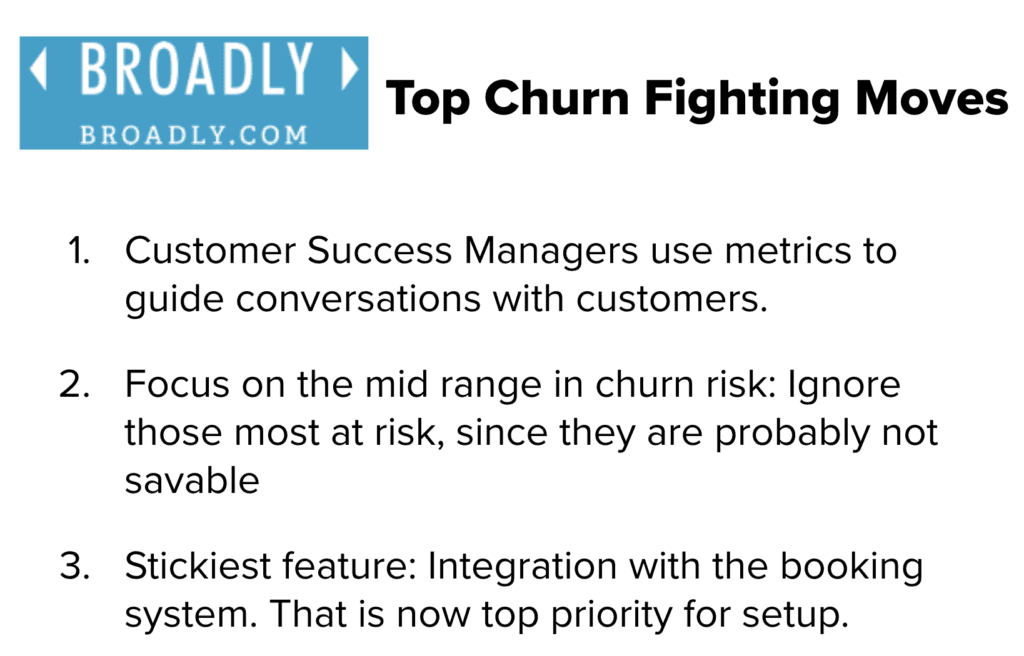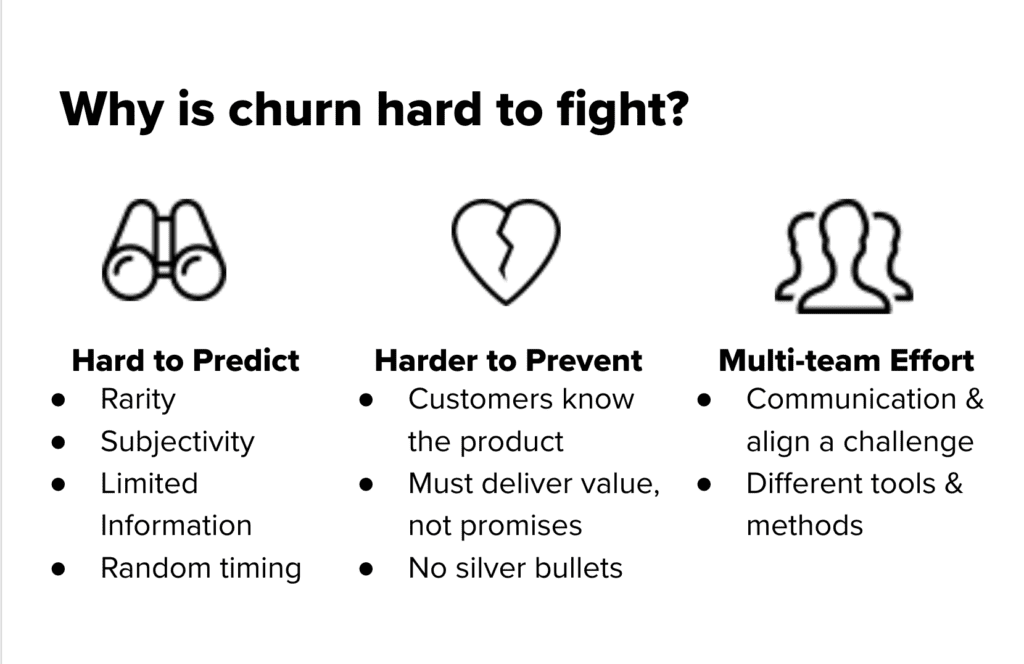Churn is when your customers drop out on you, and when it comes to your customer base, it’s inevitable.
There are a number of factors to churn, including your business model, the maturity of your company, as well as your business type. Generally, if you have less than 20% of churn per year, you’re doing pretty well; public companies are often 10% or less per year.
No matter what, you’re going to have to figure out how to manage churn on the regular. This is where data comes in, and we asked the expert, Carl Gold, Chief Data Scientist @ Zuora, to help us fight churn with data.
Here, Carl dives into how his method applies in a business context.
A Fighting Foundation
- Know your product. Of the most important things you need to know is how and when your customers are interacting with your product, and what they love, and where the love dies. A simple satisfaction survey won’t do. You need detailed usage data.
- Market to your customers. This doesn’t mean convincing them to buy what they already like, it means informing them about your product features and teaching them how to enrich their experience more.
- Set your customers up for success. Exactly where are your customers when they get stuck? Figure out where you need to provide more product training or if people are onboarding well. How do you do this? With data about when people leave.
- Do tiers, not discounts. Discounting is a desperate move. Think: the cable company calling you with a cheap renewal deal. You’re not paying attention to customers that way. Proper data might show you that some people will take $5 per month’s worth of product, and some will spend $500. You can tier and get them both…
- Find lookalikes. This involves outside research to see what other customers are doing and using. This isn’t a heavyweight churn-reducer, but it can be a useful exercise.
Churn is Resilient
Remember that churn is hard to project because it’s based on personal and random human behavior, and you don’t know everyone’s financial situation when they join or leave you. It’s hard to prevent too — if people know your product well and want to leave, it’s going to take something big to change their mind. But, you won’t have to fight as hard for your most loyal customers. Regardless of your situation, fighting churn is a full team effort. Data is the best weapon, but if it’s going to work it’s got to be easy for your teams to understand and use, it’s got to be able to predict as well as reflect, and it’s got to be laser-focused.
How Some People Have Defeated Churn with Data
Broadly is a product that helps businesses manage online reviews. When Broadly wanted to find which businesses were churning and why, they segmented their customers and learned that the total of bad reviews each business was getting didn’t matter as much as the ratio of bad vs good reviews they received. Broadly used their metrics when conversing with their customers and focused on the ones that were thriving. A ton of bad reviews says something.

Klipfolio is a dashboarding tool for company data. They analyzed their churn by means of account tenure and user activity. When they saw how deeply different customers were using their product, they repackaged their service in tiers. And they had trouble with early adoption, so they added more services for the first few months.
Versature is a VOIP business communications solution. They studied the ratio of dollars spent per call and saw that if customers were paying too much for the value they dropped out. This allowed them to identify at-risk customers early in the product cycle, help customers get the most value per service, and address customer success in all areas.
Key Takeaways:
- Fight on multiple fronts
- Use data to improve the product
- Get your onboarding right and stay in touch with customers
- Offer tiers
- Study ratios and relationships in your data, and have targeted segmentation


